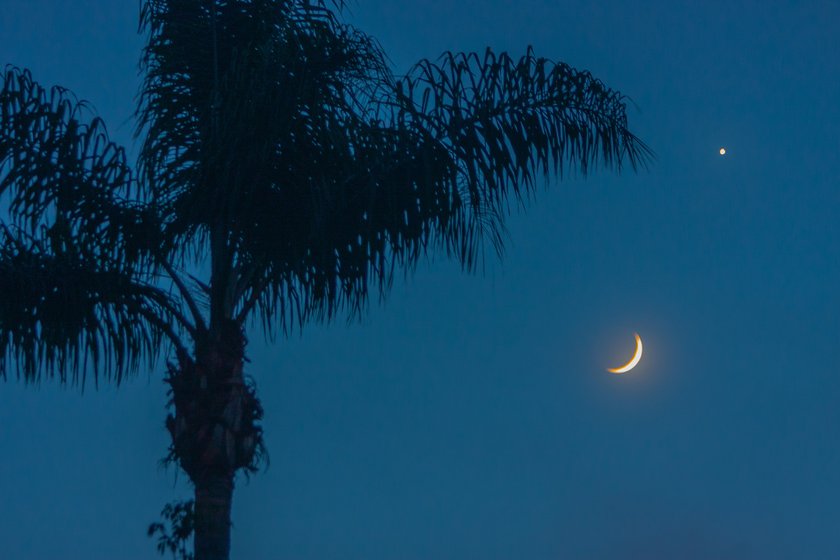Linkage with a couple of photos
-
The Wikimedian on a mission to connect everything (\(\mathbb{M}\)). Nice profile of New Zealand based Wikipedia content-creator Siobhan Leachman and her use of the Internet Archive in her editing.
-
A sunset view from my neighborhood to the foggy flatlands below (\(\mathbb{M}\)).

-
The Internet Freedom Foundation and a group of social science researchers weigh in on a publisher copyright suit (\(\mathbb{M}\), via, via2), in India’s Delhi High Court against LibGen and Sci-Hub, arguing that accessing published works for research or educational purposes is legal as fair dealing under Indian law.
-
The 11th Int. Conf. on Fun with Algorithms, FUN 2022 (\(\mathbb{M}\)). It is planned for a physical meeting on an Italian resort island (as always) in late May to early June, with hope that unlike last year it will be possible to actually meet. Authors of last year’s papers will also be given a chance to present. Submission deadline mid-February.
-
Surveillance publishing (\(\mathbb{M}\)). Jefferson Pooley argues that, whenever you use commercial academic publishing products like Scopus, Mendeley, or even the “enhanced pdf readers” of journals, they are using you, to collect and analyze your detailed behavioral patterns in order to sell the analysis to university administrators and other customers. John Baez takes the lesson that the definition of diamond open access should include no surveillance.
-
The three utilities problem (\(\mathbb{M}\)) of connecting three houses to three utilities by nine non-crossing paths can be formalized as finding a drawing of the graph as a planar graph (no such drawing exists, so it is an impossible puzzle). But that formalization hides a lot of assumptions. What surface are the lines on? Can lines pass through other houses or utilities? Answering these questions differently can make the puzzle solvable. Now a Good Article on Wikipedia.
-
This month’s conjunction of venus and the moon (\(\mathbb{M}\)). It was difficult for me to decide to keep this, mostly because I have a much better crescent moon photo by Galen Rowell on my wall in line of sight of where I edit my photos. But here it is:

-
On a density conjecture about unit fractions (\(\mathbb{M}\), via), Thomas F. Bloom. This is about the Erdős–Graham problem on Egyptian fractions. Erdős and Graham suggested that any partition of the integers into finitely many sets has a set containing the denominators of a sum of unit fractions equal to \(1\), like \(1/2 + 1/3 + 1/6 = 1\). The new paper proves more strongly that these sums exist for any positive-density set of integers.
-
The 50-year-old problem that eludes theoretical computer science (\(\mathbb{M}\)). Siobhan Roberts reviews the current status of \(\mathsf{P}\) vs \(\mathsf{NP}\). If you’re familiar with the technical side of the problem or its history, there isn’t much new, but on the social side, strong researchers continue to put effort into it, with some prominent theoreticians such as Toni Pitassi wavering from the \(\mathsf{P}\ne\mathsf{NP}\) orthodoxy and wondering whether maybe \(\mathsf{P}=\mathsf{NP}\) instead. Paywalled but viewable through Firefox reader view.
-
Counting with polygons (\(\mathbb{M}\)). You probably know Gauss’s Eureka theorem num = Δ + Δ + Δ. But what other linear combinations of triangular numbers represent all positive integers? You can check whether \(1\), \(2\), \(4\), \(5\), and \(8\) are represented, and if they are then everything else will be represented! Similar results are known for other types of polygonal numbers; see a recent result this post seems to have missed.
-
A counterexample to the Ringel circle problem (\(\mathbb{M}\), via). Ringel asked whether systems of circles, tangent only in pairs, can be colored with \(O(1)\) colors so no two tangent circles have the same color. Five colors were known to be necessary but unknown to be sufficient; see the lead image of one of my old web pages. Now Davies, Keller, Kleist, Smorodinsky, and Walczak have found systems of circles requiring arbitrarily many colors.
-
Origami face masks (\(\mathbb{M}\)), describing the masks from airgami.life. I saw a friend wearing one of these at a neighborhood craft fair the other day; it looked both functional and aesthetically pleasing. She said it worked well for keeping her glasses unfogged, too.
- Metaphor-based metaheuristics, a call for action (\(\mathbb{M}\), via). The authors’ litany of problems in this area include:
- Mismatches between metaphor, mathematical model, and implementation.
- Dressing up old concepts in neologisms.
- Unconvincing straw-man experimental comparisons.
- Publication in out-of-scope journals ill-equipped to evaluate the work.
They recommend significantly strengthened publication standards to save the reputation of their subfield.
-
Concentric vessels nest within larger forms in Matthew Chambers’ perplexing ceramic sculptures (\(\mathbb{M}\), see also). They make pleasing geometric forms, not unlike what we’ve probably all seen for sets of nesting bowls in our kitchens, but the part that perplexes me is: how does he make them nest like that? There are too many in a nest and it doesn’t look like they come apart. Many refirings, from inner to outer?
- Until recently the Wikipedia article on factorials cited the Talmudic Sefer Yetzirah as the oldest known work on the subject (\(\mathbb{M}\)). But today I learned that there is an older one from a different part of the world: Anuyogadvāra-sūtra, one of the canonical works of Jain literature on the Indian subcontinent, likely dating from 200 BCE to 100 CE. For details see p. 363 of Datta and Singh, “Use of permutations and combinations in India”.